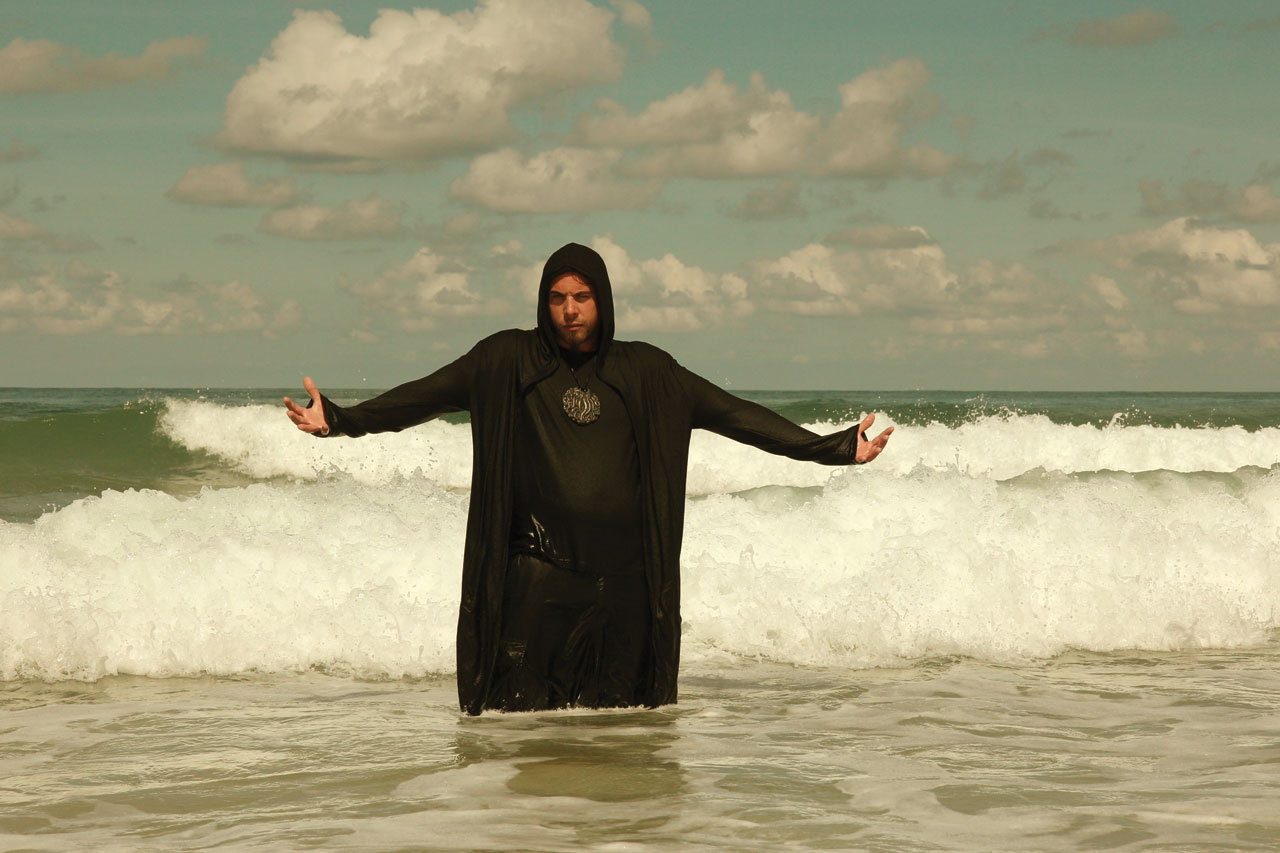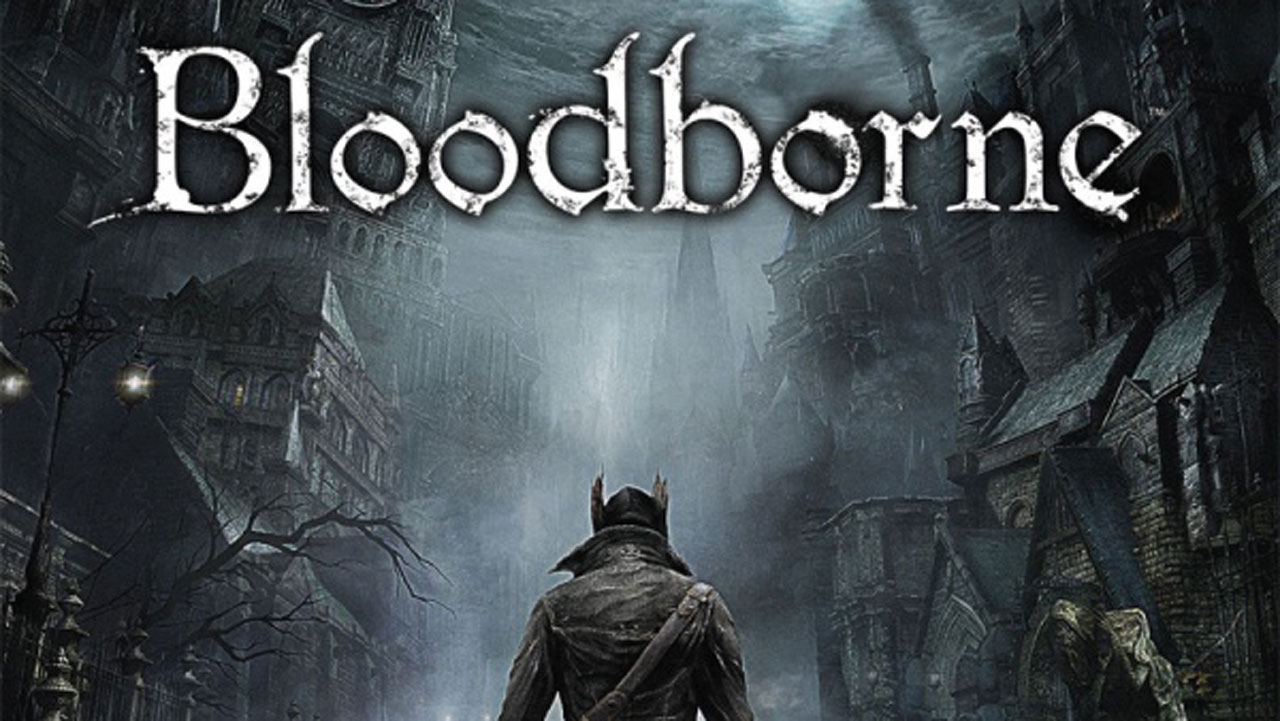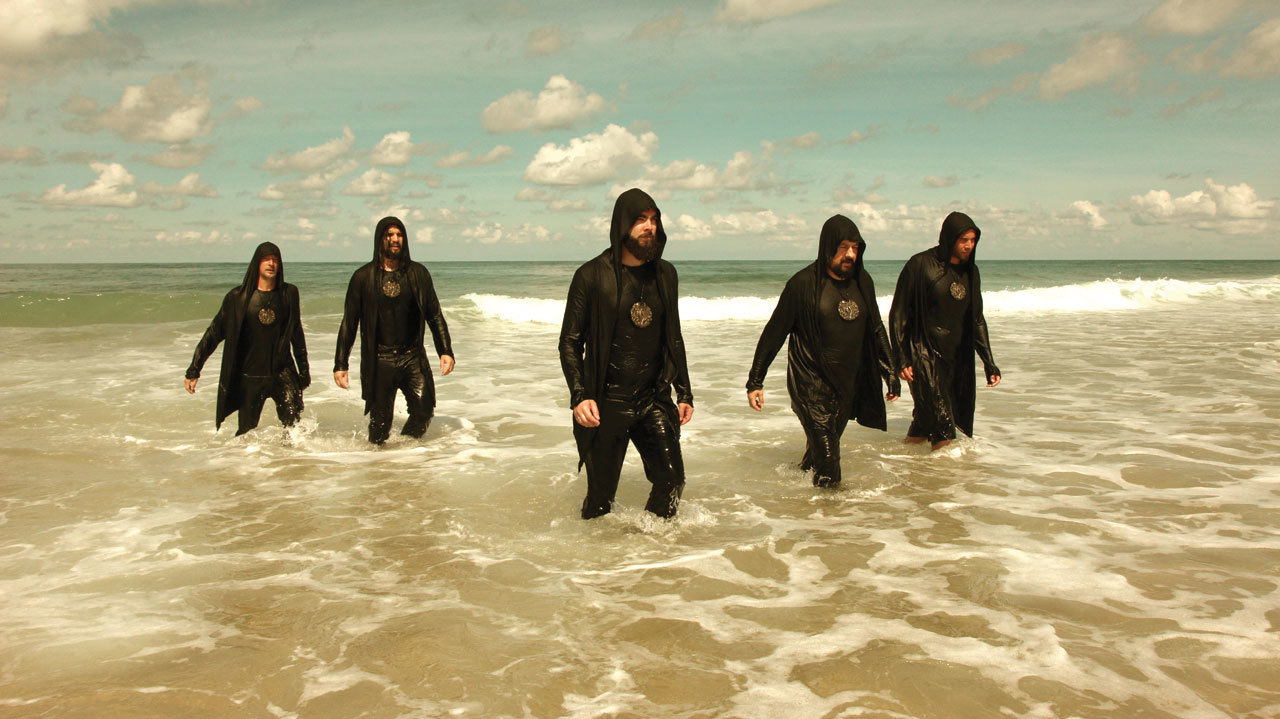“The oldest and strongest emotion of mankind is fear, and the oldest and strongest kind of fear is fear of the unknown…” – HP Lovecraft
If heavy music has any purpose beyond giving us something to listen to while we drink ourselves to death, it must surely be the confronting of life’s horrors. We dive into the nightmarish clangour of death and black metal because it feels good to confront the dark, to charge headlong towards the unknown.
The Great Old Ones understand this underlying heavy metal principle better than most. Over the course of three extraordinary studio albums, the Frenchmen have constructed a sustained and compelling tribute to the literary works and philosophy of that old metal-friendly curmudgeon, HP Lovecraft, deftly encapsulating the enormity of the cosmos and our puny insignificance within it along the way.
Lovecraft has long been a natural thematic bedfellow for underground (and not so underground) metal bands, but this band – who are named after the ancient cosmic deities of the author’s imagination – have elected to exist entirely in his universe. “
At the beginning of the band, we immediately wanted to put the Lovecraft universe into our music,” says drummer Leo Isnard. “First, we wrote the songs and then we began to look for a suitable concept to fit with the music… and it was always going to be the Lovecraft universe.
There are a lot of black metal bands who speak about Satan and other dark things, but those things are often bound to the real world. With Lovecraft, you can exist always in that dark universe. The universe of Lovecraft is so big that we didn’t need to search for anything else. It made sense from the very start.”
The Great Old Ones’ album, EOD: A Tale Of Dark Legacy, kicks off with The Shadow Over Innsmouth, a monumental epic based on one of Lovecraft’s most celebrated texts, wherein an inquisitive student travels to a ramshackle seaport in New England and slowly realises that something terrifying is lurking just beyond the shore.
Famously one of the few Lovecraft stories to feature any bona fide action, it has provided the band with the perfect kick-off point for an album that is as dense and mysterious as the tales that inspired it.
“There are so many possibilities within Lovecraft’s works,” says Leo. “On the first album [2012’s Al Azif], we spoke about Cthulhu [Lovecraft’s ageless overlord of the sea creatures] on the last song, My Love For The Stars, and there was another song called Rue d’Auseil, which was also based on a Lovecraft story.
Then we made the second album, Tekeli-li, and we took At The Mountains Of Madness from the beginning to the end. For this album, we just found another way to use the Lovecraft universe. So it’s different every time, but always with HP Lovecraft.”
Aside from his timeless stories of macabre ancient forces leaking into the present day, HP Lovecraft was also notable for his philosophical musings, in which he tended to present a view of mankind as a pointless blight on the planet and of no real significance within the cosmic state of things.
The natural world was a thing of colossal, ruthless power to Lovecraft, and his obsession with the unplumbed depths of the oceans and the neverending void of outer space frequently fed into his writing. The closing track on EOD: A Tale Of Dark Legacy taps into that cosmic paranoia with devastating effect.
Entitled Mare Infinitum (‘The Sea Of Infinity’), it’s simultaneously monstrous and mesmerising, a sprawling, lavish and emotionally supercharged climax to an album that seems as married to Lovecraft’s troubled internal monologue as it does to his stories.
“Lovecraft didn’t like anything that he didn’t know or understand,” Leo notes. “The ocean is the last point in our world where most of the things within it are still undiscovered. I don’t want to give too much away about the story of the album, but I want to say that Mare Infinitum should make you feel like you’re entering something… and that you’ll never come back.
The ocean is the last unexplained territory and you’re inside it, you know? That’s why we went for the big, orchestral ending. A friend of mine arranged the vocals, he came with three friends and they sang all the parts. We wanted it to sound really big, like the depths of the oceans. We needed something really big and dreamlike for the end of the album.”

Although ostensibly a black metal band, The Great Old Ones are anything but generic, with a sound that is as boldly cinematic and texturally substantial as it is brutal or intense.
The new album is a very obvious step up in production terms, the band’s decision to work with increasingly respected French producer Frédéric ‘El Mobo’ Motte paying off handsomely. Accurately evoking the gruesome enormity of Lovecraft’s darkest creations may seem an impossible task, but somehow Leo and his bandmates have made a record that delivers on the promise of their creative ambitions.
“I fucking love the production on the first two albums, because they’re really analogic and organic, you know?” says Leo. “We didn’t want to lose that on EOD, so Frédéric made a great combination of the best sounds from the first two albums but with a more modern production. He got such a big, amazing sound, and we’re very happy and proud of the results. Hopefully everyone can hear the evolution in our work. I’ll be honest, it’s the first time I’ve ever heard my drums sound so good, ha ha!”
In much the same way that Lovecraft wrote horror stories in order to channel and confront his own fears, The Great Old Ones are making music that almost celebrates the unimaginable depths of darkness that exist both within us and around us.
It would be easy to draw a cheap journalistic parallel between the core tenets of Lovecraft’s terror of the unknown and the modern world’s steadily growing paranoia about mankind’s powerlessness in the face of ecological calamity and political corruption, but Leo insists that the messages hidden within his band’s music are not meant to resonate within reality. Instead, The Great Old Ones are offering their take on Lovecraft’s universe as a more escapist means to reflect the pitch-black shadows that haunt humanity.
“You can feel your place in the universe when you look at the stars,” says the drummer. “That’s at the heart of Lovecraft’s work. I don’t think our music says anything about the real world and I don’t want people thinking about Donald Trump when they listen to us, ha ha! There’s something very big, undefined and ungraspable about space that is so beautiful and terrifying, and Lovecraft always had that feeling in his universe. Everybody in the band appreciates his philosophy and all the things he said about the cosmos and his vision of the universe… but he was really afraid of the sky, ha ha! He didn’t trust the sky or the ocean because they’re so vast and unexplored.”
If there has ever been a time when escapism has seemed an appropriate response to the realities of life, 2017 is it. The Great Old Ones hope to be touring extensively over the next 12 months, including a tentatively planned trip to the UK, spreading their Lovecraftian gospel and giving underground metal disciples a chance to glory in the oppressive splendour of music that echoes the murderous thud of Cthulhu’s tentacles against the doors of perception. Right now, very few bands are capable of harnessing and wielding this level of unearthly power, and given the limitless nature of the cosmos, these loyal students of Howard Phillips Lovecraft will have no shortage of terrifying tales to tell and fears to face in the future.
“There are so many different ways to explore the Lovecraft universe through music. It’s a whole universe, you know?” Leo concludes. “Maybe one day we’ll tell stories about some other Great Old Ones, but right now this is the perfect fit for this band. It’s great because there is horror within this universe but there is beauty too. In Lovecraft’s vision, there is always horror and fear, but there’s also a sense of determination. All the guys in the stories are scared, but they always want to go further into the dark. Just like us.”
EOD: A TALE OF DARK LEGACY IS OUT NOW VIA SEASON OF MIST

Portal Remains
Three of many visitations from Lovecraft’s world into our own
BLOODBORNE
An all-action RPG for the P S4, Bloodborne draws heavily from the Cthulhu mythos, right down to characters and monsters being directly based on Lovecraft’s warped creations. Clearly the idea went down well: Bloodborne has sold over two million copies since its release in 2015.
RE-ANIMATOR
This dark 1985 sci-fi yarn is widely regarded as one of the great cult horror movies of the 80s. Based on Lovecraft’s novella Herbert West – Reanimator, it’s a riot of revived corpses and heavy-handed moral dilemmas, set at the author’s fictional Miskatonic University in Massachusetts.
NEONOMICON
As well as penning Yuggoth Cultures And Other Growths, a collection of tales based around the Cthulhu mythos, famed comic writer Alan Moore wrote this four-part detective graphic novel leading not just into Lovecraft’s universe but some of the more unsavoury aspects of Lovecraft himself, dealing with racism and sexual hang-ups as well as other horrific creatures brooding below.

